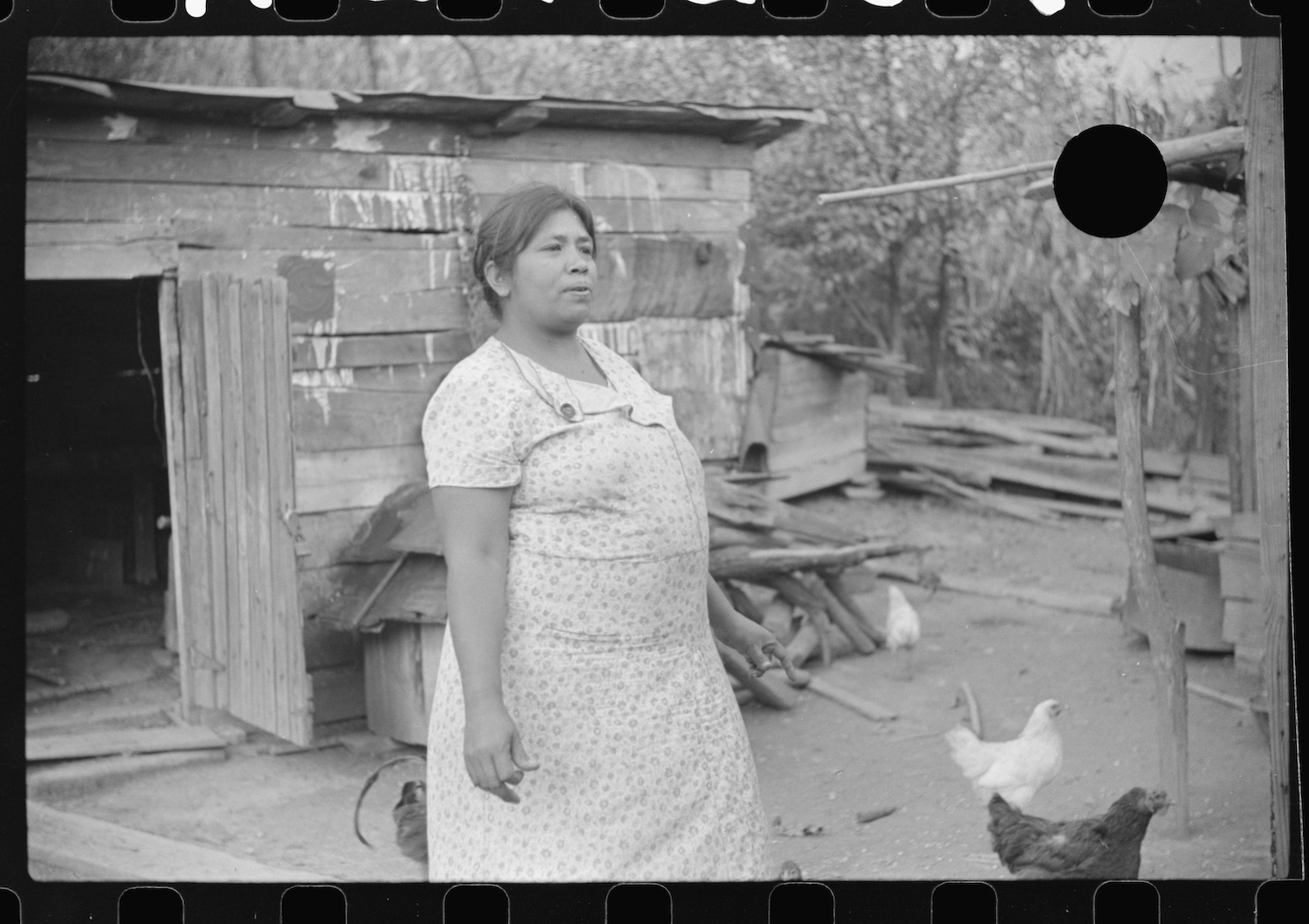The Farm Security Administration—Office of War Information (FSA-OWI) produced some of the most iconic images of the Great Depression and World War II and included photographers such as Dorothea Lange, Walker Evans, and Ben Shahn who shaped the visual culture of the era both in its moment and in American memory. Unit photographers were sent across the country to document and combat rural poverty. The negatives were sent to Washington, DC. The growing collection came to be known as “The File.” With the United State’s entry into WWII, the unit moved into the Office of War Information and the collection became known as the FSA-OWI File. Marion Post Wolcott began her work with the FSA on assignment in West Virginia where her mother had distributed family-planning literature. Her mother advised her to do things like observe clothes hanging on the line to better understand the people she wanted to photograph. Wolcott would go on to canvas the United States for her work with the FSA from 1938-1942.
Wolcott was one of eleven FSA photographers and one of only two women (Dorothea Lange, the other) hired for the project. While researching her photographs from West Virginia, something caught my eye. Mexican miners. In addition to whites and blacks, I knew all manner of immigrants had come to the coalfields in search of steady work: Hungarians, Italians, and others. But it never dawned on me that Mexican coal miners would've been working in West Virginia nearly a hundred years ago (or perhaps longer). A minority (woman) photographing minority (Mexican) coal miners and their families. These are the primary images I wanted to share for this article. It seems timely in our current political climate. Women are still underrepresented, overlooked, and underpaid. Immigrants, particularly Mexican immigrants, still struggle to take hold of the American Dream while constantly facing the threat of harassment or even worse, deportation. I doubt the coal operators in West Virginia's mines cared much about immigration status as long as the coal continued to run and profits remained steady. (I also stumbled upon this brilliant piece of research by Heidi Taylor-Caudill and Whitney Hayes called Immigrants in the Coalfields.)
In a 1965 oral history interview, Wolcott shares, "And so my first assignments were very close to Washington. I think one of the first ones, if not the very first, was in the coal fields in West Virginia. That was a very short assignment, of course. And it was a very interesting one, too. I found the people not as apathetic as I had expected they might be. They weren't too beaten down. Of course, many of them were but they were people with hope and some of them still had a little drive, although, of course, their health was so bad it was telling . . . ."
On another note, Roy Stryker, overseer of the FSA photographers, was known for killing negatives of the work that didn't pass muster. He rendered the images useless by punching a single a hole through them with a manual hole punch (see the first and fourth images in this article as examples). In 2016, Bill McDowell published Ground: A Reprise of Photographs from the Farm Security Administration (below) with Taj Forer and Michael Itkoff of Daylight Books, which is a collection of Stryker's hole-punched rejections sequenced in an altogether poetic and resonant project. The resulting book contains 185 plates from more than 1,000 files from the Library of Congress. (Just one of Wolcott's rejected images made its way into the book - also a West Virginia image).
Editor's note: Photogrammar is a web-based platform for organizing, searching, and visualizing the 170,000 photographs from 1935 to 1945 created by the United States Farm Security Administration and Office of War Information (FSA-OWI). Below is a screenshot of my search for Marion Post Wolcott's images from West Virginia during her time with the FSA.



















